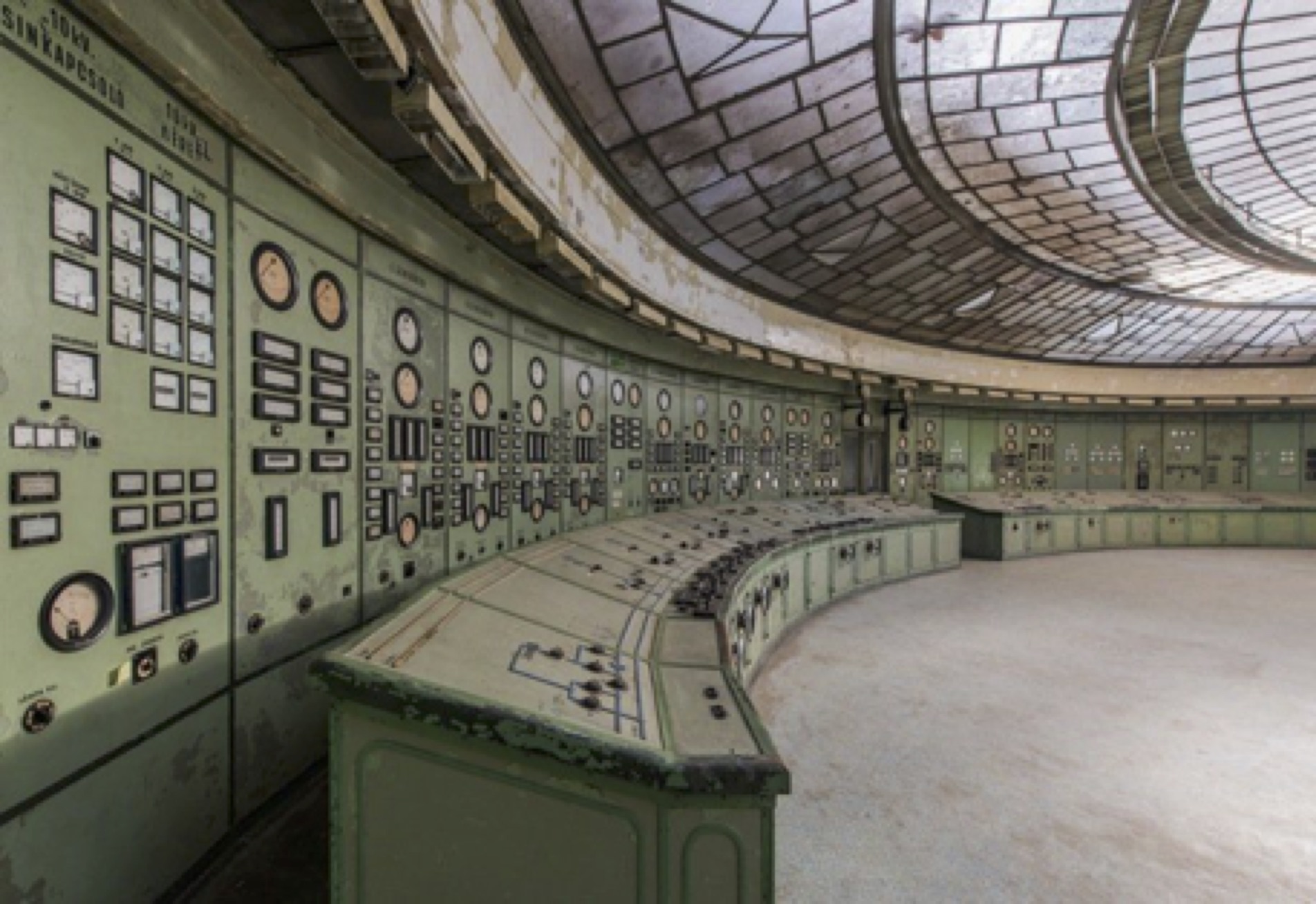
Archive of Fall 2019 Science Court Case
This page provides a summary of the Science Court case tried in Fall 2019. It includes the case statement, details on the student teams that prepared, reported and tried the case, and the jury that made the decision. Links are provided to the information used in the trial including the Science Team's research findings that were presented as evidence, the Legal Team's pro and con arguments, and the jury decision.
For additional information on this case with weekly updates and detailed reporting on the trial, visit the blog page.
For information on how to cite this Science Court case, click here.
2019 Science Court Case
The Science Court Case Statement is made up of two parts: a problem that needs to be addressed, and a proposed solution. The SciCourt case for Fall 2019 was
Problem: Nuclear power, which is a clean and highly efficient source of energy, is underutilized in the United States.
Solution: The U.S. government should increase funding for the development and construction of nuclear power plants with the aim of significantly increasing nuclear power use.
2019 Student Teams
The facts were researched by the students on the Science Team (shown below) each focused on a specific domain indicated in parentheses. Top row from left to right: Andrew Coenen (nuclear engineering), Keeley Auld (risk assessment), Jake Robbennolt (nuclear engineering), Jackson Vendola (risk assessment), Collin Pospisil (risk assessment), Dominic Marticorena (nuclear engineering), Elizabeth Heile (health & safety). Second from top from left to right: Autum Schuldt (economics), Diana Hoernemann (environmental science), Sarah Ley (health & safety), Zachary Van Raden (economics). Third from top from left to right: Graham Pearson (nuclear engineering), Ayush Ram (environmental science). Fourth row from top from left to right: Alexandra Janey (health & safety), Demetrios Case (health & safety), Ian Smith (environmental science).
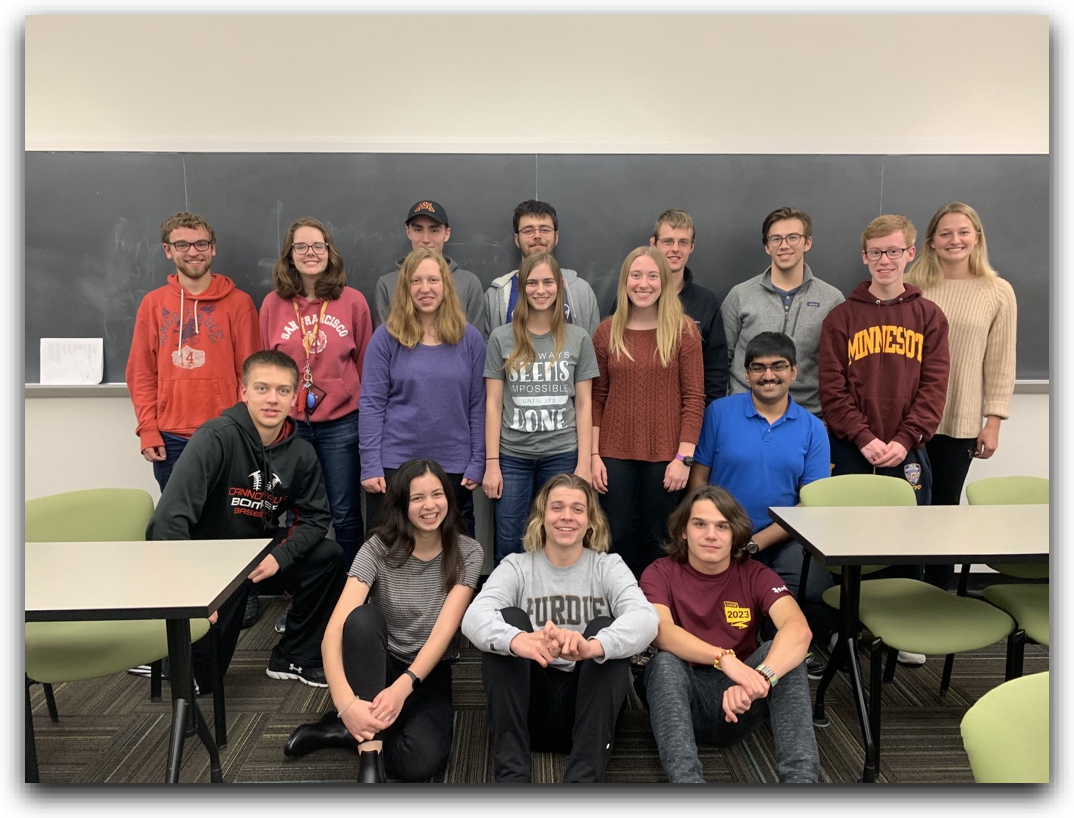
The arguments pro and con the case were made by the students on the Legal Team (shown below from left to right): Jennifer Holt (con), Jacob Muth (pro), Gabriella Gutenkauf (con), Kori Skypek (con), Sarah Whiteside (pro), Grace Jones (pro).
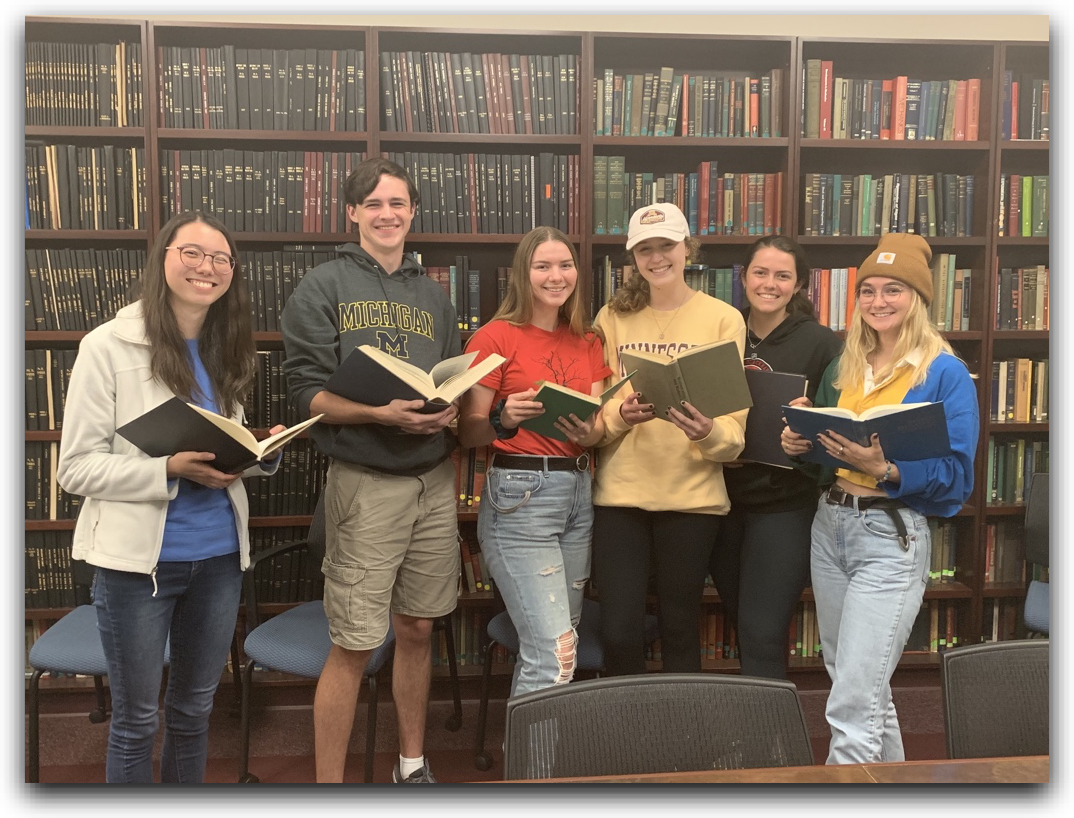
The preparations and trial were documented and communicated to the public by the Media Team (shown below from left to right): Amanda Billips (podcasting), Grace O'Neil (video production), Molly Fahey (reporting), Jonathan Leibovitch (social media).
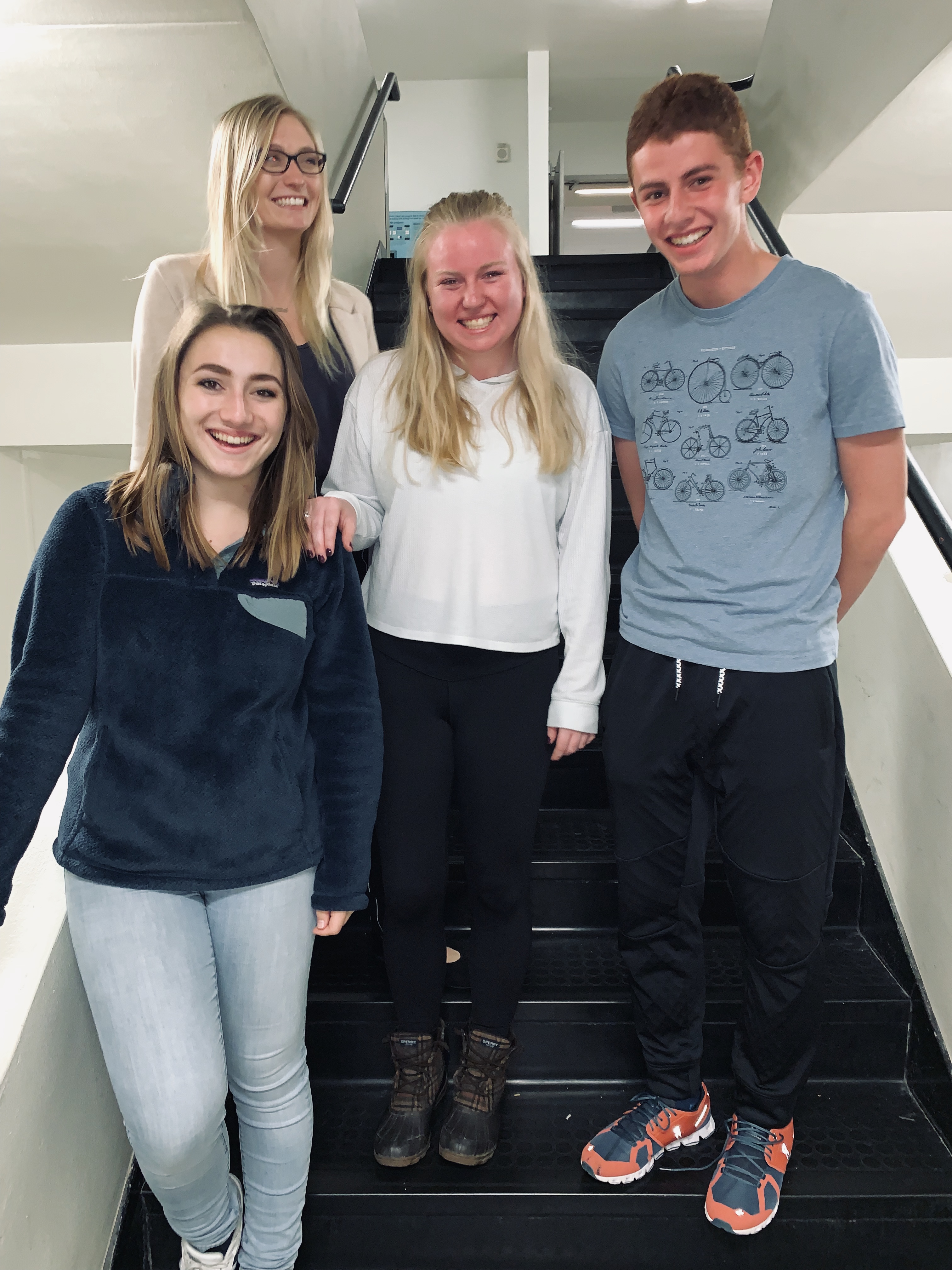
2019 Jury
The trial took place on November 23, 2019 at West Hall at Hamline University in front of a public jury of 15 volunteers (shown below). The jury members in alphabetical order were: Matt Byrne, J. Drake Hamilton, Aaron Hanson, Fafa Hoshyargar, Len Jennings, Gary Johnson, Amy-Marie Lemanski, Nathan Mara, Stefano Martiniani, Roger Mehus, Julia Klatt Singer, Nils Swensen, Jorge Vinals, Jeanette N. Williams, Robert Williams.
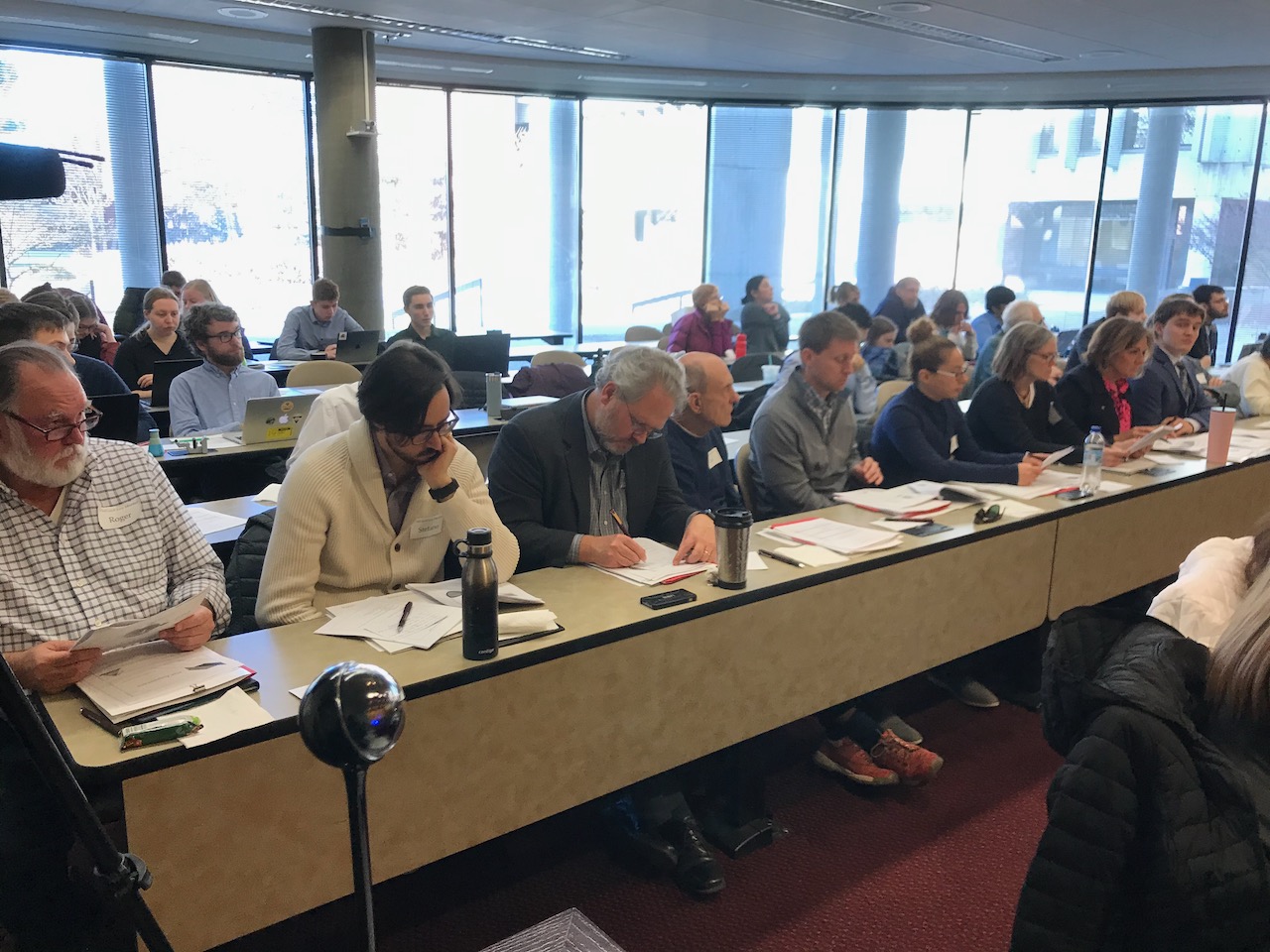
2019 Research
The Science Team members reviewed 383 journal articles (some of which were systematic reviews or meta-analyses that themselves reviewed multiple studies). Evidence was collected in five domains (nuclear engineering, environment, health & safety, risk assessment, and economics). The questions researched under each of these domains are available in the Case Review Document.
The evidence was challenged by the pro and con members of the Legal Team in a pretrial hearing. Following the hearing, both sides agreed to accept the remaining evidence and argue from a common set of facts. A complete list of the reviewed articles along with reasons for their inclusion is available in the Master Source List.
Technical reports documenting the findings for the different domains studied by the Science Team are given below (in the order presented at the trial):
- Nuclear Engineering Report
- Environment Report
- Health & Safety Report
- Risk Assessment Report
- Economics Report
2019 Legal Arguments
The Legal Team is divided into pro and con teams that are each responsible for proposing complete solutions for addressing the posited problem, one that is more on the pro side (the "pro-ish" proposal), and one that is more on the con side (the "con-ish" proposal). This approach is designed to ensure that the pro and con legal teams consider the posited problem comprehensively, and not simply attempt to poke holes in each others' arguments. The pro-ish and con-ish proposals are presented to the jury as two competing worldviews.
A summary of the pro-ish and con-ish proposals is provided in the following position papers:
2019 Jury Decision
And the verdict is... the jury decided by a vote of 10 to 5 for the pro side in favor of increased investment in nuclear power in the United States. The jury had the option to recommend a "third way" suggestion as a compromise between the pro and con positions but did not do so. The jury majority statement and minority statement follow below.
MAJORITY STATEMENT (10 jurors)
While we recognize there are well established risks with nuclear energy, as presented the science supports that the risks are containable, and not significant enough to reject the proposed increase in nuclear energy. The benefits far outweigh the risks.
In the long term, nuclear energy is dramatically cheaper, and the land use is minimal when compared to the alternatives. Continuous availability of energy, load following, as well as the impact of transmission losses due to remote location of renewable sources, are significant advantages of nuclear over renewal energy, at least until large storage capabilities become available. New technologies such as Thorium are promising to potentially reduce costs and increase output in the long term. The abundance of Thorium is also significant, is a safer technology and has with few proliferation concerns. Compared to current sources of energy (coal or petroleum), nuclear is much cleaner, more environmentally benign, and has great potential in reducing global warming. Accidents have been extremely rare, and have had limited impact. Health concerns are minimal, and are misunderstood by the general public.
MINORITY STATEMENT (5 jurors)
Renewable energy sources are already broadly available, and very efficient both energy wise and financially. The return on investment of nuclear energy as described was not persuasive given the expected timeline of an eventual transition to renewable sources. The proposal to ramp up nuclear energy use from a current 8% to a projected 40% in the short period of time discussed is not realistic. Finally, there is no persuasive reason to face the added environmental consequences deriving from long term storage of nuclear waste.
Third Way Suggestion
A "third way" suggestion was not made by the jury.
2019 Citation
To cite this Science Court case:
Science Court. (2019). “Should the U.S. government increase funding for the development and construction of nuclear power plants with the aim of significantly increasing nuclear power use?" University of Minnesota. Retrieved from https://scicourt.umn.edu/2019-nuclear-power